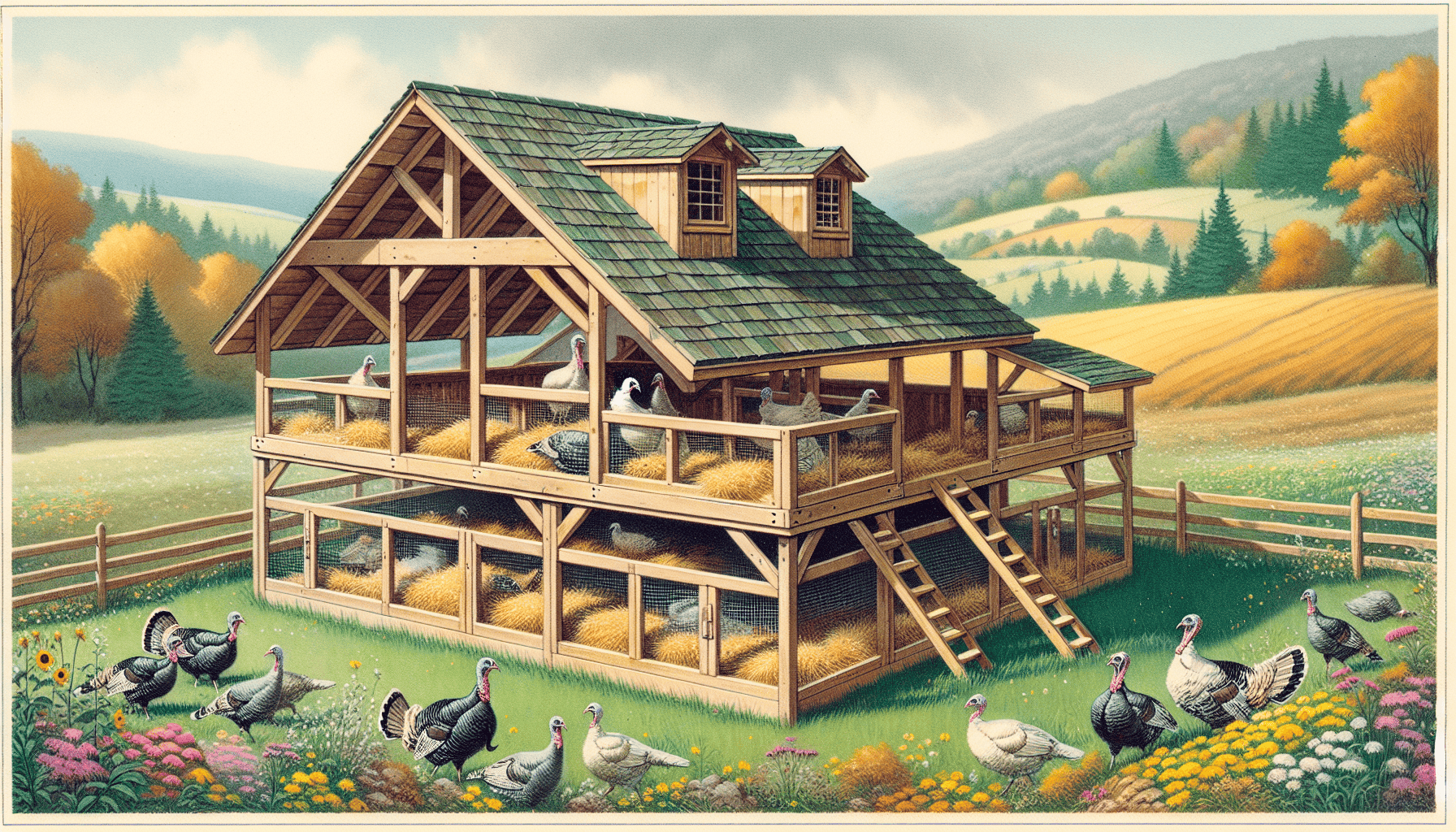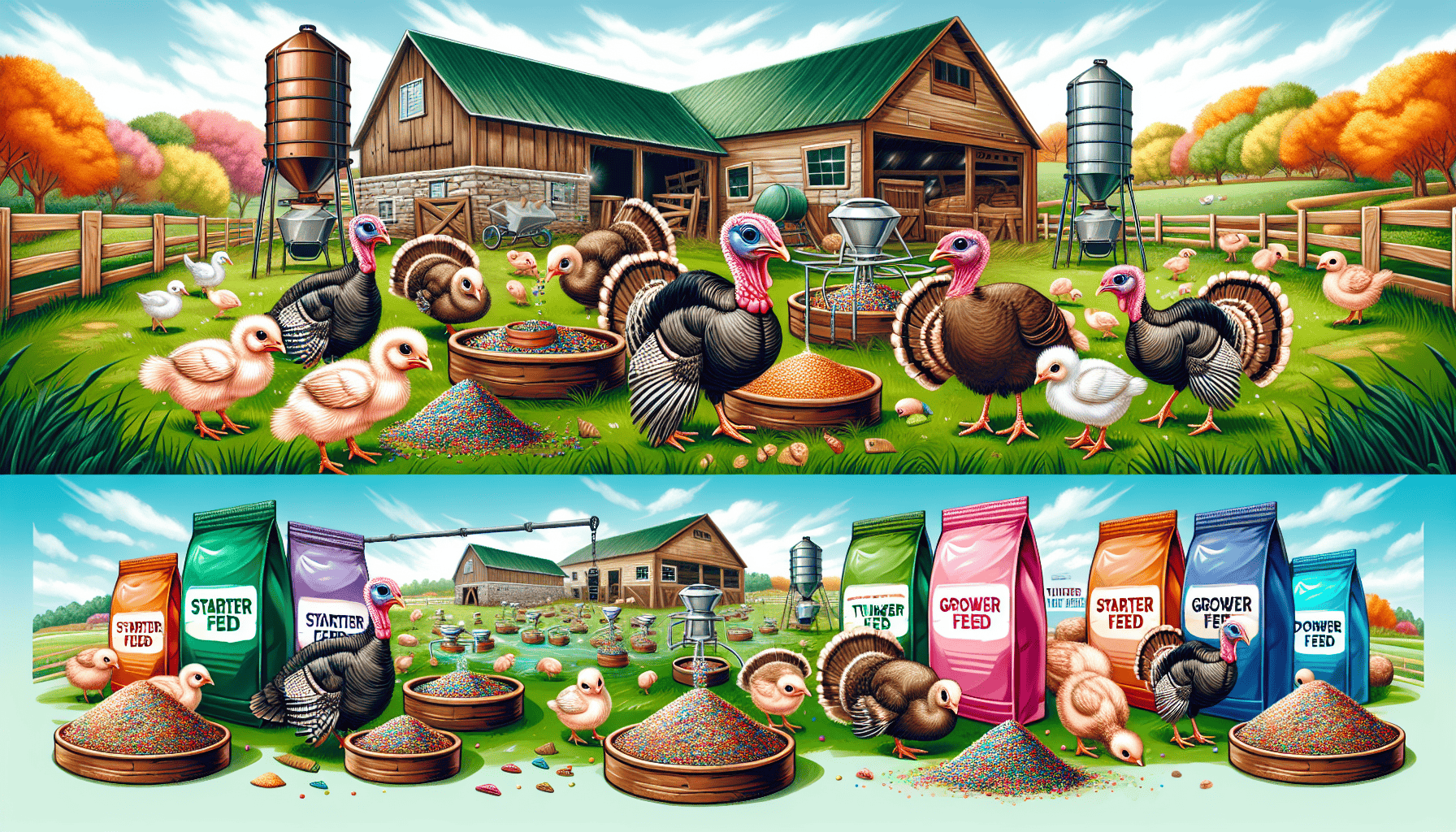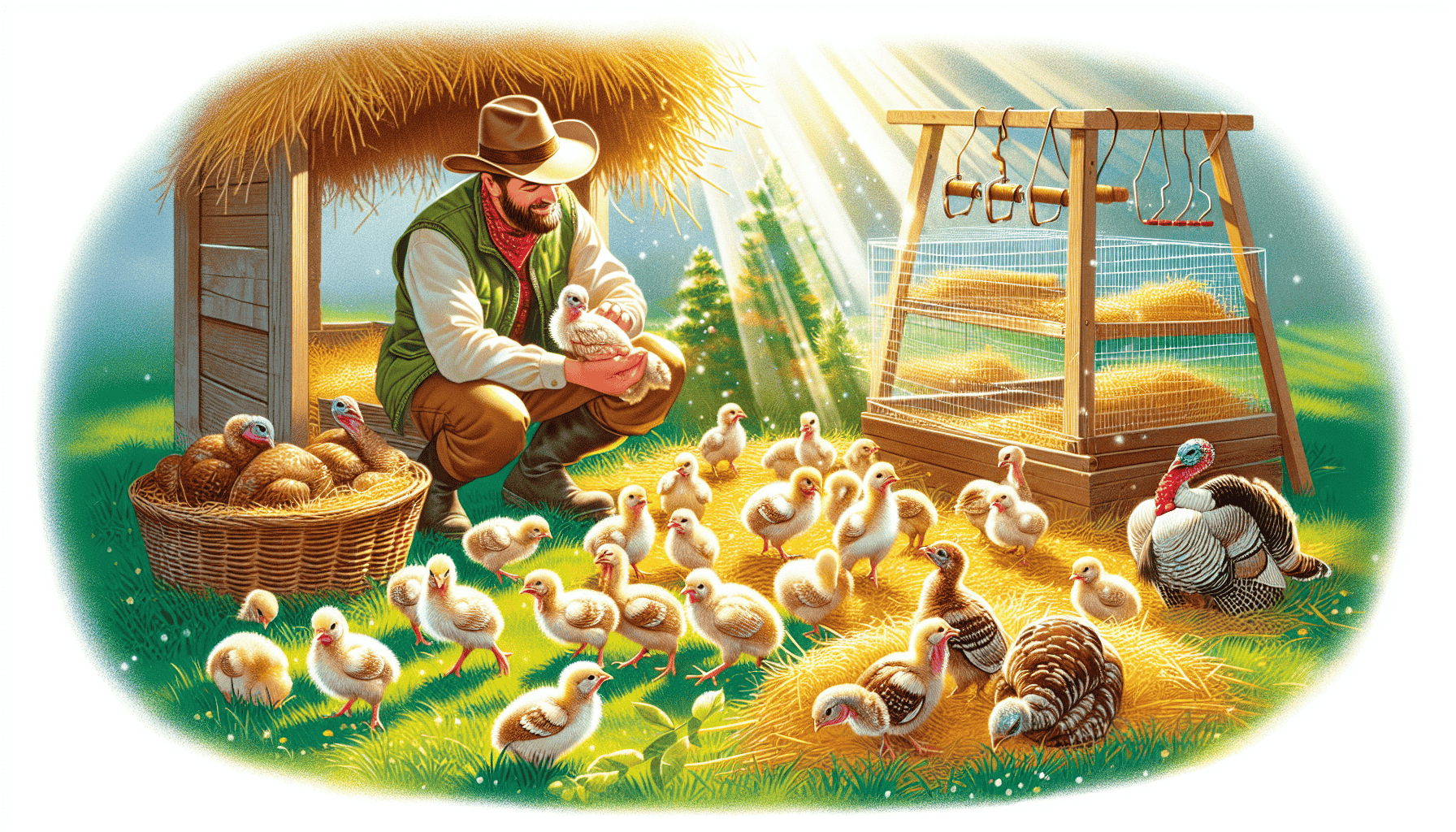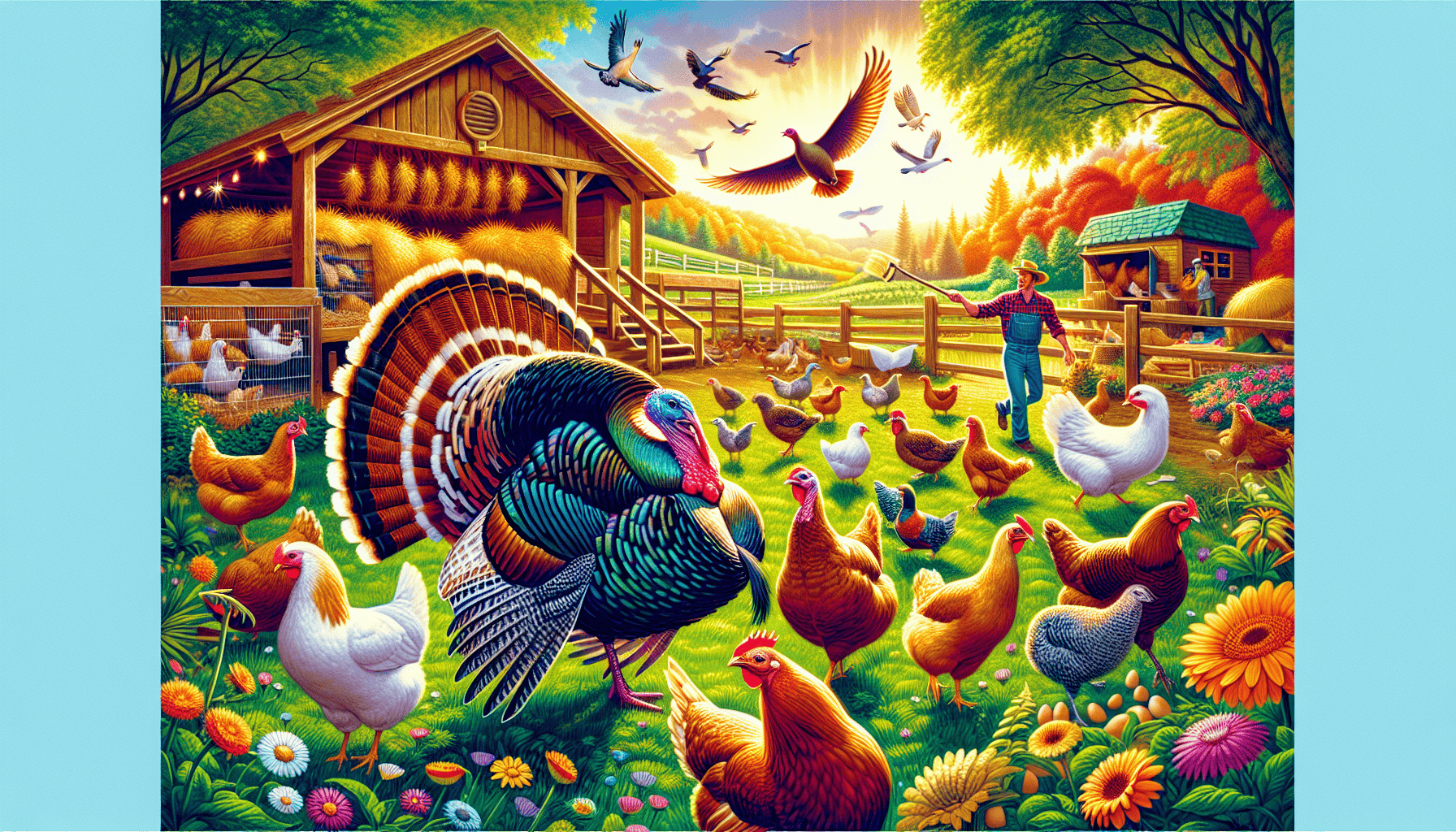The Ultimate Guide to Raising Turkeys: Tips and Tricks

This guide is designed to assist you with everything required for successfully raising turkeys, encompassing the selection of breeds, as well as providing proper housing and feeding techniques to ensure your turkeys thrive.
Key Takeaways
Start by selecting the right turkey breed and provide quality feed, fresh water, and a secure living space for healthy flock development.
Each turkey needs at least 15 square feet of indoor space, adequate ventilation, and proper housing to ensure comfort and safety.
Pay attention to seasonal care adjustments and health management practices to keep your turkeys healthy and thriving throughout the year.
Getting Started with Raising Turkeys

Grasping the fundamental aspects is essential when embarking on raising turkeys. You should first pick an appropriate breed, taking into account their distinct traits and needs. Consult a nearby Purina dealer for expert advice on acquiring turkey poults.
To ensure your turkeys flourish, they require high-quality feed formulated specifically for turkeys along with constant access to fresh water. It’s necessary to provide them with a safe habitat that includes sanitary bedding material, perches for roosting, and nesting boxes at ground level. It’s advisable to start with fewer birds, which allows you to learn without becoming inundated.
Particular attention and care are needed when dealing with young birds known as turkeys. Establishing the right environment and providing adequate resources from the beginning are key steps in fostering a robust flock of turkeys.
Choosing the Right Turkey Breed
Selecting the appropriate breed of turkey is crucial for achieving desired outcomes. Heritage turkeys, including breeds like Royal Palm, Bourbon Red, and Narragansett, are sought after due to their robust flavor profile, ability to reproduce naturally and extended longevity. By choosing to raise heritage turkeys, you contribute towards the conservation of these breeds that are at risk of disappearing.
The purpose behind raising turkeys should direct your choice of breed. If superior meat quality is what you’re aiming for, heritage varieties serve as an excellent option. If your goal is raising larger birds in a shorter time frame, commercial breeds might be more suitable.
Understanding the distinct traits each turkey breed possesses empowers you with knowledge necessary for selecting a bird that aligns perfectly with your intentions and available resources.
Housing Your Turkeys

Ensuring the well-being of your turkeys necessitates proper housing. To avoid health issues and overcrowding, each bird should be allocated no less than 15 square feet inside the coop. The need for indoor space will vary depending on whether your turkeys are entirely housed or can access a pasture.
Your turkey coop must include features such as roosting bars positioned between three to four feet off the ground, sufficient airflow, and defenses against predators. You can construct suitable shelters using materials like wood, metal, and wire mesh. Wooden floorings might require additional strengthening to block predator intrusion.
Elevated perching areas are essential within the coop because they align with turkeys’ instinctual behavior to roost higher up from the ground. Make certain that any openings in their living quarters do not exceed one quarter of an inch in size so as to deter predatory animals effectively. By providing appropriate accommodation for your birds, you ensure they remain secure and at ease in their environment.
Feeding Turkeys at Different Stages

It is essential to feed turkeys properly at each stage of their growth. During the initial eight weeks, turkeys require a starter feed rich in protein—about 28%—to ensure robust development and health. To conserve food and reduce waste, it’s beneficial to use specialized poultry feeders designed to prevent spillage.
As they grow older, from 8 weeks up until around 6 months old, young turkeys should be shifted onto a diet that contains between 24-26% protein content. Steer clear of layer or breeder feeds because these contain high levels of calcium which can negatively impact the young birds’ growth trajectory. Once matured into adult turkeys and possibly roaming as free-range birds, they may consume diets with lower protein concentrations ranging from 16-18%. In this case, if they are free-ranging, an additional source like crushed oyster shell can be provided for mineral supplementation.
Turkey should always have access to lukewarm water since cold water could potentially cause harm. It’s important to keep an eye on their weight gain and regulate their feeding practices so as not only to curb obesity risks but also maintain optimal health regardless of changing seasons.
Managing Space and Free-Range Options
Turkeys flourish when given a considerable amount of space outdoors to forage. They require more room than chickens due to their greater size, and it is advisable to allot at least half an acre per dozen adult turkeys. Free-ranging permits them to engage in instinctive activities such as dust baths and interacting with one another.
It’s essential for free-ranging turkeys that they have access to a secure roosting area during the night. To prevent escape by flight, wing clipping might be necessary. Providing sufficient space is key to maintaining the health and contentment of these birds.
Being social creatures, turkeys benefit from being raised in groups. Keeping at least three or six together can significantly improve their quality of life.
Health and Disease Prevention
Ensuring the well-being of your turkeys is essential. The threat posed by Blackhead disease cannot be taken lightly due to its high fatality rates in turkey populations. To curb the spread of this disease, quarantine affected birds immediately and establish measures that hinder their migration. Conducting frequent health assessments will aid in identifying any problems at an early stage.
Providing a constant supply of fresh, cool water is critical for both hydration and general health of these birds. Grit should be made available as it plays a vital role in food digestion for turkeys not solely reliant on starter feed formulated specifically for them. Keep an eye out for parasites and uphold hygiene standards within their habitat.
By adhering to these preventive strategies, you can help ensure that your turkeys remain healthy while also sidestepping expensive visits to the vetinary clinic.
Breeding and Raising Poults

Raising turkey poults from breeding turkeys demands careful attention. It is important to start them in a brooder equipped with a heat lamp at temperatures ranging from 95 to 100 degrees Fahrenheit during their first weeks of life, then gradually decreasing the temperature by five degrees each week until they grow their adult feathers.
The brooder should be free of drafts and well-insulated, complete with suitable bedding material to preserve warmth. Engaging regularly with human contact and providing treats can help make turkeys notably sociable.
Appropriate care during the initial stages is crucial for ensuring robust health and development in young turkeys.
Integrating Turkeys with Other Poultry
Combining turkeys with different poultry species such as chickens can present difficulties, yet it is ultimately fulfilling. Chickens are hosts to the Heterakis worm, which is known for transmitting blackhead disease that impacts young turkeys significantly. To avoid competition and guarantee adequate nutrition for each bird type within your flock, establish distinct feeding and watering areas.
For maintaining the healthiest possible environment, separate housing for each species is advantageous. In instances of illness outbreak among the birds, promptly isolate those affected to hinder the transmission of disease across your flock. Diligent research along with thorough preparation forms the cornerstone of successful cohabitation between turkeys and chickens in a shared space.
Cultivating a mixed flock offers benefits regarding social interaction and encourages natural behaviors amongst all avian members despite any potential hurdles one might encounter during their care-taking experience.
Seasonal Care and Weather Considerations
The management of turkeys requires adaptability as the seasons transition. In the cold winter months, it’s critical to supply ample heating and increase their food intake when the temperature falls below freezing. To avoid harm, make certain that their living quarters are resistant to slipping and always have new bedding available.
During summer, ensure your turkeys have access to areas with shade for protection against heat stroke. This is also a time to modify their feeding routine by incorporating an abundance of fresh greens which promotes their well-being in hotter weather.
By tailoring your approach throughout different times of year, you can maintain the comfort and robust health of your turkeys all through each season.
Benefits of Raising Turkeys

Cultivating turkeys in your backyard presents a multitude of advantages. Heritage varieties such as the Narragansett and Bourbon Red are celebrated for their succulent, flavorful meat. The Standard Bronze breed not only yields savory poultry but also contributes to your homestead endeavors. When you raise turkeys yourself, it gives you the power to ensure superior quality meat without unwanted preservatives and sodium.
With chickens, turkeys maintain tidier conditions and bring less disorder into their living spaces, which makes them simpler creatures to handle. They serve as an enhancement to your home farming experience while simultaneously offering valuable learning experiences for young ones.
Adding turkey breeds into backyard poultry configurations is fundamentally enriching on both practical grounds and instructional fronts.
Summary
Cultivating a flock of turkeys can be quite fulfilling if one is equipped with the necessary expertise and makes appropriate preparations. Whether you’re selecting an optimal breed, crafting a cozy shelter, regulating their nourishment or monitoring their well-being, each aspect plays a pivotal role in your venture’s triumph. Choosing heritage breeds has its distinct advantages, and allowing turkeys to range freely promotes natural living conditions for them.
Maintaining robust health within your turkey group necessitates diligent disease prevention strategies. Adapting care according to seasonal variations ensures that your turkeys remain comfortable throughout the year. Rearing these birds goes beyond mere meat production. It enriches educational endeavors and augments the homesteading lifestyle.
Embrace both dedication and attentive nurturing as key ingredients when embarking on this endeavor involving turkey cultivation—and consider beginning this fascinating journey today!
Frequently Asked Questions
What breed of turkey should I choose for beginners?
Choosing heritage breeds like Royal Palm or Bourbon Red is a great pick for beginners since they have natural reproduction abilities and offer tasty meat.
They’ll be easier to manage and rewarding to raise!
How much space do turkeys need?
If you are raising adult turkeys, it is essential to provide at least 15 square feet of space for each turkey indoors. When allowing them to range freely, ensure there is roughly half an acre available for a group of 12 turkeys.
Ensuring ample space is vital for their well-being and ability to flourish!
What should I feed turkey poults?
Ensuring the health of your turkey poults requires initiating their diet with a high-protein feed, containing 28% protein for the initial eight weeks. After this period, transition them to grower feed that comprises 24-26% protein and continue this until they reach approximately six months of age.
This step is critical for their optimal growth!
Can I raise turkeys with chickens?
Certainly, it is possible to raise turkeys alongside chickens. Housing them in distinct coops is recommended to prevent disease transmission and guarantee that both receive their appropriate nutritional needs.
How do I protect turkeys from blackhead disease?
Ensure the protection of turkeys from blackhead disease by avoiding their interaction with chickens, quarantining any birds that show signs of infection, and maintaining a hygienic living space for them.
Adhering to these measures is crucial for preserving their well-being and security.






